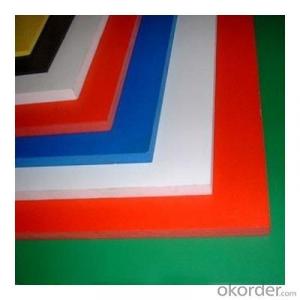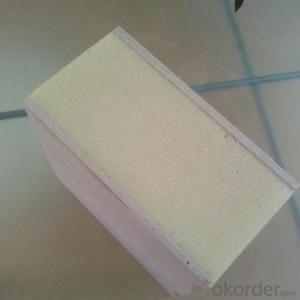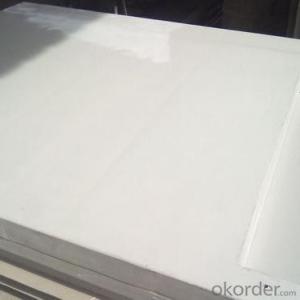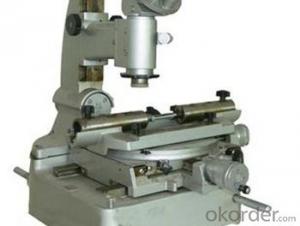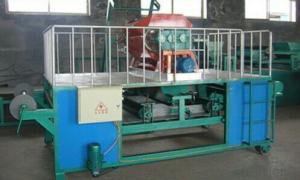FRP pultruded grating with Anti-corrosion and anti-rust and best quality on sales
- Loading Port:
- Tianjin
- Payment Terms:
- TT OR LC
- Min Order Qty:
- 5000 m.t.
- Supply Capability:
- 100000 m.t./month
OKorder Service Pledge
OKorder Financial Service
You Might Also Like
PRODUCT DESCRIPTION
Pultruded grating is made by a particular assembly process, which using “I” shape as its main load-bearing and special rod to go through the bearing bar. Pultruded grating include the standard grating and the custom grating, the custom grating can be designed to meet customer’s requirement or special using condition by changing the shape, size and space of the bearing bars, the surface can be covered with lozenge panel, grit panel, or added the anti-slippery sand directly.
FRP pultruded grating has the most characteristics of molded grating, but it has its distinct advantages, it has very high fiberglass content in the loading direction, so it has very high load capability, it has more superiority when used at wide span, so that the basic support will be decreased and the project cost will be reduced accordingly.
SPECIFICATION
Thickness (mm) | Bar width (mm) | Open space (mm) | Open rate (%) | Approx weight (kg/m |
25.4 | 15.2 | 22.8 | 60 | 13.2 |
25.4 | 15.2 | 15.2 | 50 | 15.9 |
25.4 | 15.2 | 10.1 | 40 | 18.5 |
25.4 | 40 | 10.8 | 21 | 14.5 |
38.1 | 15.2 | 22.8 | 60 | 15.8 |
38.1 | 15.2 | 15.2 | 50 | 19.1 |
38.1 | 15.2 | 10.1 | 40 | 22.4 |
50.8 | 25.4 | 25.4 | 50 | 16.6 |
50.8 | 25.4 | 12.7 | 33 | 21.1 |
CHOICE FOR PULTRUDED GRATING
Resin: GP resin, ISO resin, VE resin, Phenol resin
Color choice: Yellow, gray, green, custom color
Surface choice: Groove surface, grit surface, lozenge cover surface
FEATURES
a. Anti-corrosion and anti-rust
b. Light weight and high strength
c. Anti-flammable
d. Anti- fatigue
e. Safe and anti-slippery
f. . Good economic benefit
g. Easy of maintenance
h. Excellent electromagnetism property
FIELDS SERVED
Sewage treatment,
water supply and drainage,
chemical industry,
oil industry,
power engineering,
pulp and paper,
construction engineering,
spinning, marine engineering.
APPLICATION
Operation terrace,
stair walkway,
ground floor,
trench cover,
sidewalk,
foot bridge,
equipment safety fence,
scaffold.
COMPANT DESCRIPTION
CNBM,China National Building Materials Group is a state-owned enterprise in charge of administrative affairs in china building materials industry. Established in 1984, CNBM is a large group corporation of building materials with total assets of 25 billion RMB and a total staff of 30,000.CNBM now owns 200 subordinating firms of solely owned and joint-venture companies.
CNBM International Corporation is one subsidiary of CNBM, we focus on offering good-quality products,professional service and complete solution to our customers. Strong delivery capacity, advanced technology& management, strong financing capability and excellent after-sale service are our advantages in sharing international market.
FAQ
1.Q:Are you factory or trading company ?
A:We are Factory produce FRP machines and FRP products.
2.Q:If can customized by customers requirements?
A:yes,we can produce the machine with customized size.
3.Q:How about the payment?
A:We accept any kind of payment.
4.Q:What is the guarantee?
A:Gurantee is one year.
5.Q:If you can training?
A:yes ,we can training in our factory also can send engineers to your factory training.
PICTURES
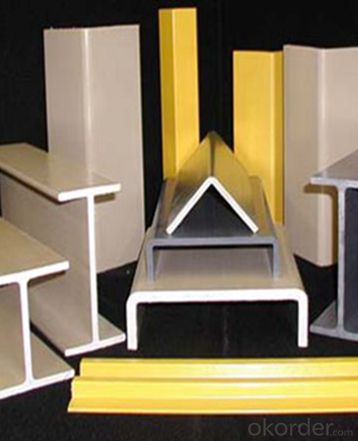
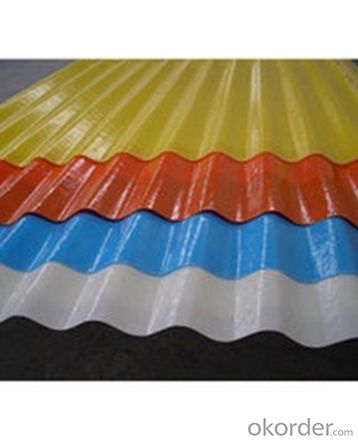
- Q:How do FRP pultrusion profiles perform in coastal environments?
- FRP pultrusion profiles perform exceptionally well in coastal environments due to their inherent resistance to corrosion, moisture, and UV radiation. Thanks to their non-metallic composition, they are not susceptible to rust or degradation caused by saltwater exposure. Additionally, FRP profiles have high strength-to-weight ratios, making them ideal for applications in coastal areas where weight and durability are crucial.
- Q:Do FRP pultrusion profiles require any special tools for installation?
- Yes, FRP (Fiber Reinforced Polymer) pultrusion profiles do require some special tools for installation. Pultrusion profiles are manufactured using a continuous process that involves pulling fibers through a resin bath and then into a heated die, resulting in a strong, lightweight, and corrosion-resistant material. To properly install FRP pultrusion profiles, some specific tools are commonly used. These tools include: 1. Cutting Tools: FRP profiles may need to be cut to specific lengths during installation. Special cutting tools, such as high-speed saws or abrasive wheels, are often used to ensure clean and precise cuts. 2. Drilling Tools: FRP profiles may require holes to be drilled for fasteners or other fittings. Special drill bits designed for working with composite materials are typically used to avoid damaging the profile while creating the necessary holes. 3. Fastening Tools: Depending on the application, FRP profiles may need to be fastened to other surfaces or structures. Special fasteners like stainless steel screws, bolts, or adhesives are commonly used to secure the profiles in place. 4. Joining Tools: In certain cases, FRP profiles may need to be joined together to create longer lengths or more complex shapes. Special joining techniques like bonding, riveting, or using mechanical connectors are employed to ensure a strong and secure connection. It is important to note that the specific tools required for installation may vary based on the project's complexity, size, and the manufacturer's recommendations. Therefore, it is always advisable to consult the manufacturer's installation guidelines or seek professional assistance to ensure proper installation and to maximize the performance of FRP pultrusion profiles.
- Q:Are FRP pultrusion profiles resistant to rotting or decaying?
- FRP pultrusion profiles possess a high resistance to rot and decay due to their composition, consisting of a combination of fiber reinforcement, like fiberglass, and a polymer resin matrix. Unlike wood and other conventional materials that rot and decay when exposed to moisture and environmental elements, FRP profiles do not absorb water as they are non-porous. Moreover, the polymer resin employed in FRP exhibits exceptional resistance to chemical corrosion, rendering it impervious to rot-causing agents such as fungi or bacteria. Consequently, FRP pultrusion profiles boast a significantly longer lifespan and necessitate minimal maintenance in comparison to traditional materials, making them an exceptional choice for applications that demand resistance to rot or decay.
- Q:Are FRP pultrusion profiles resistant to weathering?
- FRP pultrusion profiles exhibit exceptional resistance to weathering, thanks to the pultrusion process. This process generates a robust, long-lasting, and non-corrosive material that inherently withstands diverse weather conditions. Comprised of a fusion of fiberglass reinforcements and a thermosetting resin matrix, FRP profiles boast a unique composition that delivers outstanding protection against UV radiation, moisture, chemicals, and temperature changes. Consequently, these profiles prove ideal for outdoor applications. Extensive testing has verified that FRP pultrusion profiles retain their structural integrity and physical properties even after prolonged exposure to harsh weather conditions. Unlike conventional materials such as wood or metal, they do not degrade, warp, or crack due to sunlight, rain, snow, or extreme temperatures. The exceptional weather resistance of FRP pultrusion profiles enables their utilization across a broad range of industries, including construction, infrastructure, marine, and transportation. Moreover, these profiles exhibit a low thermal expansion and contraction rate, ensuring dimensional stability in fluctuating weather conditions. This quality prevents warping or distortion over time, making FRP pultrusion profiles an excellent choice for long-term outdoor use. To summarize, FRP pultrusion profiles excel in weather resistance and offer enduring durability in various outdoor environments. Their capacity to endure UV radiation, moisture, chemicals, and temperature fluctuations makes them a dependable and cost-effective solution for diverse applications.
- Q:Are FRP pultrusion profiles resistant to alkalis?
- FRP pultrusion profiles are generally able to resist alkalis. This is because FRP composites are materials made of a polymer matrix reinforced with fibers like glass or carbon. The polymer matrix in FRP pultrusion profiles has excellent resistance to alkalis, making them suitable for use in places where alkalis are present, such as chemical processing plants, wastewater treatment facilities, or marine structures. However, the resistance of FRP pultrusion profiles to alkalis may vary depending on factors like the type of polymer resin used and the concentration and temperature of the alkali solution. Therefore, it is important to refer to the manufacturer's specifications or perform specific tests to ensure that FRP pultrusion profiles are compatible with the intended alkali environment.
- Q:Are FRP pultrusion profiles resistant to humidity or moisture?
- Yes, FRP (Fiber Reinforced Polymer) pultrusion profiles are highly resistant to humidity and moisture. The combination of fiberglass reinforcement and a polymer resin matrix makes them inherently resistant to water absorption. Unlike traditional materials like wood or metal, FRP pultrusion profiles do not swell, warp, or corrode when exposed to moisture or high humidity levels. This resistance to moisture makes FRP pultrusions suitable for a wide range of applications in various industries, including construction, infrastructure, and marine environments. Additionally, FRP pultrusion profiles can be further enhanced with additional protective coatings or surface finishes to provide even greater resistance to moisture and humidity.
- Q:What is the flexural strength of FRP pultrusion profiles?
- The flexural strength of FRP pultrusion profiles is not fixed and can fluctuate depending on the particular composite materials utilized and the method of manufacture. These profiles are purposely designed to possess high strength-to-weight ratios and are capable of displaying flexural strengths ranging from approximately 300 MPa (43,500 psi) to over 1,000 MPa (145,000 psi). Several factors have an impact on the flexural strength of FRP pultrusion profiles, including the fibers' type and orientation, the resin matrix, the manufacturing technique, and any additional reinforcement or additives. For instance, carbon fibers generally yield superior flexural strengths when compared to glass fibers due to their inherent stiffness and strength properties. It is important to acknowledge that the flexural strength can differ based on the specific application and design prerequisites. Engineers and manufacturers typically undertake testing and analysis to ascertain the flexural strength characteristics of FRP pultrusion profiles tailored for their intended usage. This ensures compliance with safety standards while considering factors such as load demands, environmental conditions, and anticipated service life.
- Q:What are the different types of FRP pultrusion profiles available?
- A variety of FRP pultrusion profiles are available to meet specific application requirements and performance criteria. These profiles include: 1. Standard shapes: These profiles are widely used in various industries and applications. They come in different sizes and shapes, such as round tubes, square tubes, rectangular tubes, and angles. Standard shapes offer versatility and are suitable for both structural and non-structural applications. 2. Custom profiles: These profiles are tailored to customer specifications. They offer flexibility in terms of shape, dimensions, and reinforcement options. Custom profiles are ideal for unique or specialized applications where standard shapes may not suffice. 3. Structural profiles: These profiles are designed for high strength and stiffness. They are commonly used in load-bearing applications, including beams, columns, and trusses. Structural profiles are reinforced with additional fibers to enhance their load-bearing capacity. 4. Electrical profiles: These profiles possess excellent electrical insulation properties. They find application in electrical and electronics applications such as cable trays, busbars, and insulating supports. Electrical profiles offer high dielectric strength and resistivity. 5. Environmental profiles: These profiles are formulated to withstand harsh environmental conditions, including extreme temperatures, UV radiation, and chemical exposure. They are commonly used in outdoor applications like structural supports, handrails, and grating systems. Environmental profiles offer long-term durability and resistance to degradation. 6. Fire-retardant profiles: These profiles are designed to have improved fire resistance properties. They are commonly used in applications where fire safety is crucial, such as building construction, transportation, and aerospace. Fire-retardant profiles incorporate additives that inhibit flame spread and reduce smoke generation. It is important to note that these are just a few examples of the FRP pultrusion profiles available. Depending on specific industry requirements, there may be other specialized profiles. The selection of the appropriate profile depends on factors such as the intended application, load requirements, environmental conditions, and regulatory standards.
- Q:Can FRP pultrusion profiles be used in the construction of offshore platforms?
- Yes, FRP (Fiber Reinforced Polymer) pultrusion profiles can be used in the construction of offshore platforms. FRP pultrusion profiles have several advantageous properties that make them suitable for offshore applications. Firstly, FRP pultrusion profiles are lightweight yet strong, which is crucial for offshore platforms that need to withstand harsh environmental conditions such as strong winds, waves, and corrosive saltwater. The high strength-to-weight ratio of FRP makes it an ideal choice for reducing overall weight while maintaining structural integrity. Secondly, FRP is highly resistant to corrosion, unlike traditional construction materials such as steel. This is particularly important in the offshore environment, where saltwater exposure can lead to rapid corrosion of metal structures. FRP pultrusion profiles do not rust or corrode, resulting in longer service life and reduced maintenance costs. Furthermore, FRP pultrusion profiles can be designed and manufactured to have excellent fire resistance properties. This is crucial for offshore platforms, as fire incidents can have catastrophic consequences. FRP materials can be engineered to meet specific fire safety standards, providing an added layer of protection. Additionally, FRP pultrusion profiles offer design flexibility, as they can be easily customized to meet specific project requirements. This allows for the creation of complex shapes and sizes, enabling efficient construction and installation of offshore platforms. Overall, the lightweight, corrosion-resistant, fire-resistant, and customizable nature of FRP pultrusion profiles make them a suitable choice for the construction of offshore platforms. They offer numerous advantages over traditional materials, contributing to improved safety, durability, and cost-effectiveness in offshore construction projects.
- Q:Are FRP pultrusion profiles resistant to termites or other pests?
- FRP pultrusion profiles possess inherent resistance against termites and other pests. Unlike traditional wood or metal materials, FRP profiles fail to serve as a food source for termites or any other pests. FRP comprises reinforced fibers and a polymer matrix, typically constructed from fiberglass and resin. These constituents lack appeal to pests and do not provide any nutritional value, thus rendering FRP profiles highly resistant to termite damage or infestation. The capability of withstanding pests is among the numerous benefits of employing FRP pultrusion profiles across diverse applications, particularly in outdoor or humid settings, where termites frequently thrive.
1. Manufacturer Overview |
|
|---|---|
| Location | |
| Year Established | |
| Annual Output Value | |
| Main Markets | |
| Company Certifications | |
2. Manufacturer Certificates |
|
|---|---|
| a) Certification Name | |
| Range | |
| Reference | |
| Validity Period | |
3. Manufacturer Capability |
|
|---|---|
| a)Trade Capacity | |
| Nearest Port | |
| Export Percentage | |
| No.of Employees in Trade Department | |
| Language Spoken: | |
| b)Factory Information | |
| Factory Size: | |
| No. of Production Lines | |
| Contract Manufacturing | |
| Product Price Range | |
Send your message to us
FRP pultruded grating with Anti-corrosion and anti-rust and best quality on sales
- Loading Port:
- Tianjin
- Payment Terms:
- TT OR LC
- Min Order Qty:
- 5000 m.t.
- Supply Capability:
- 100000 m.t./month
OKorder Service Pledge
OKorder Financial Service
Similar products
New products
Hot products
Hot Searches
Related keywords
